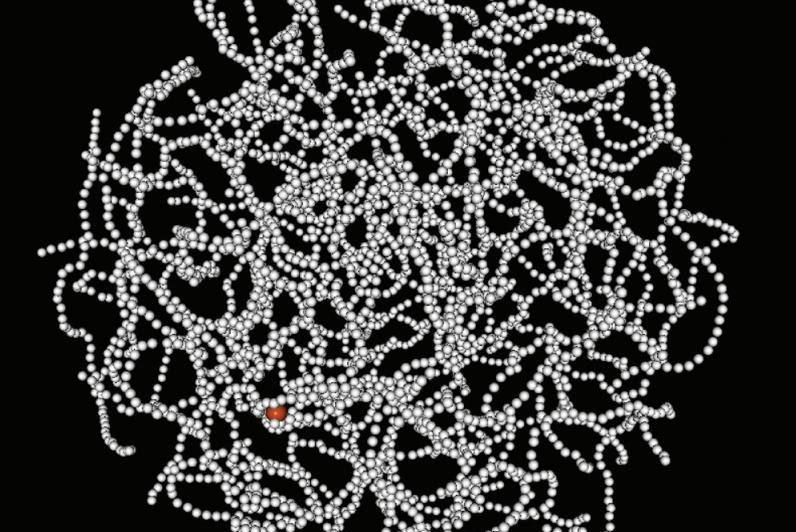The protein tasked with controlling the beads of tightly wound DNA strands that make up a chromosome must measure the distances between each bead, or nucleosome. Photo by Ana Maria Florescu
TRIESTE, Italy, May 23 (UPI) -- A new study confirms the ability of a protein to measure distance. The protein belongs to the ISWI family. It is a nucleosome remodelling motor and controls the organization of DNA strands.
A chromosome strand features tiny beads of tightly wound and folded DNA called nucleosomes. The DNA strands are wound around proteins called histones. The beads are linked by DNA strands of varying length.
The ISWI protein serves to organize these beads, and is often tasked with spacing them at equidistant intervals. This task requires them to understand the length of each connecting DNA strand.
Scientists wanted to know how they could measure such a variable. To find out, they recreated the live system in a fluid environment -- nucleosomes, strands and remodelling motors.
"What we observed in our calculations is that the longer the DNA segment between one nucleosome and the next the shorter the time it takes the motor to bind to it," Ana Maria Florescu, research scientist at the International School for Advanced Studies in Trieste, Italy, said in a news release.
Each connecting strand oscillates. The shorter it is, the faster it vibrates, making it more difficult for the protein to attach. The protein is able to "sense" the length of each connecting strand by the time it takes to attach itself.
"It is indeed a 'sensory' issue, but let's not forget we are dealing with protein complexes, which don't have organs of sense," explained Florescu.
Florescu conducted the research with Kuni Iwasa, a research scientist from the U.S. National Institutes of Health. They performed their experiments at the Max Planck Institute for Physics of Complex Systems in Dresden, Germany.
DNA strands can't be used when they are tightly wonld around the spool-like histones, but they must be neatly packaged to fit inside cells. The ISWI protein is essential. It makes the otherwise inaccessible DNA strands usable and controllable, and to do this, it must be able to measure.
The researchers published their new findings in the Journal of Statistical Mechanics: Theory and Experiment.















